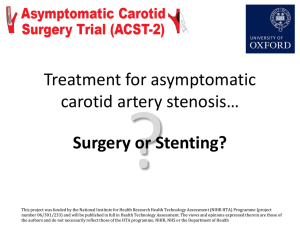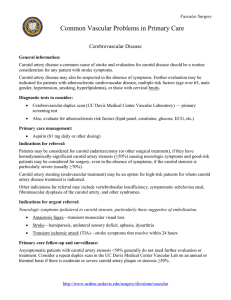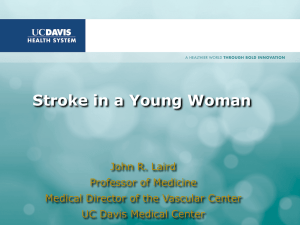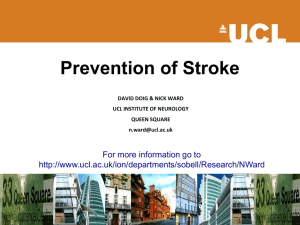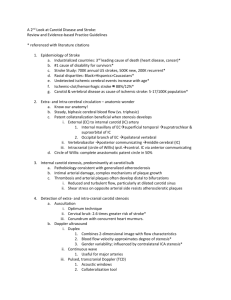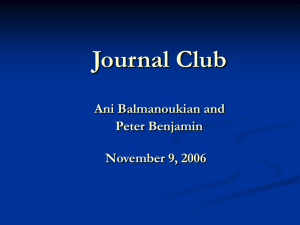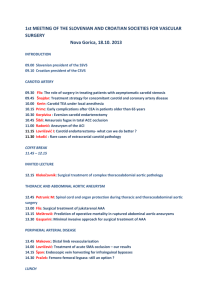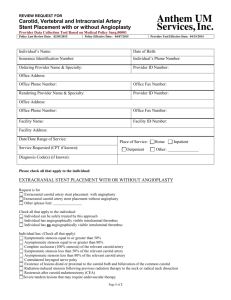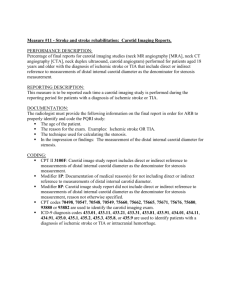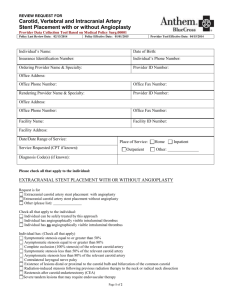Background: Peripheral aneurysms were
advertisement
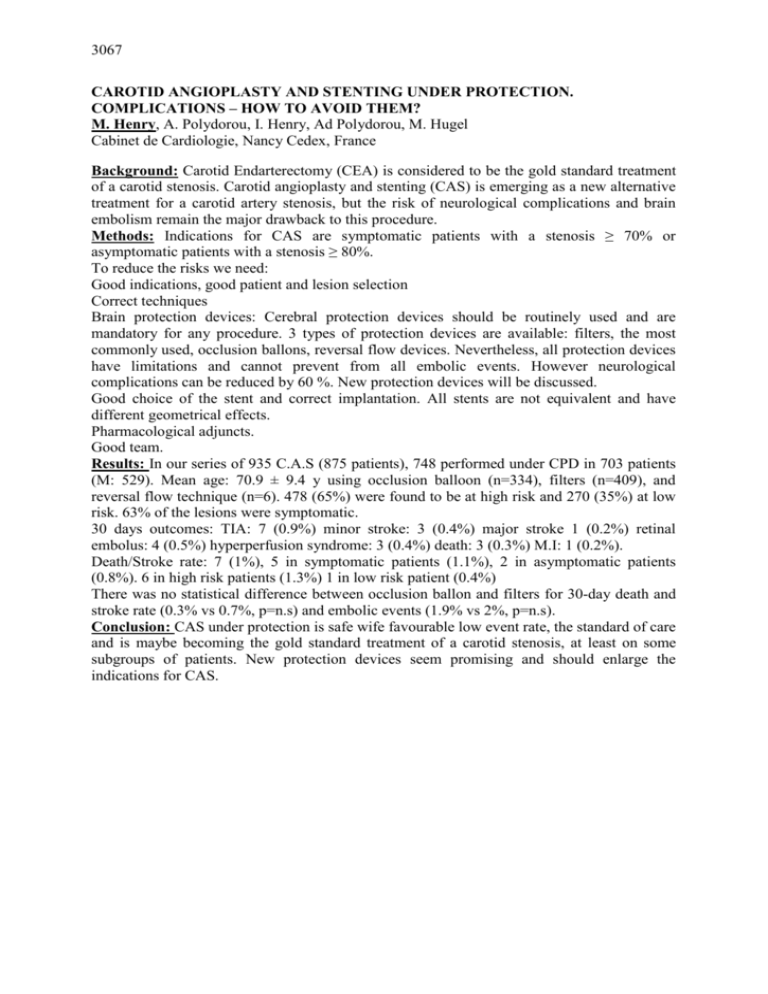
3067 CAROTID ANGIOPLASTY AND STENTING UNDER PROTECTION. COMPLICATIONS – HOW TO AVOID THEM? M. Henry, A. Polydorou, I. Henry, Ad Polydorou, M. Hugel Cabinet de Cardiologie, Nancy Cedex, France Background: Carotid Endarterectomy (CEA) is considered to be the gold standard treatment of a carotid stenosis. Carotid angioplasty and stenting (CAS) is emerging as a new alternative treatment for a carotid artery stenosis, but the risk of neurological complications and brain embolism remain the major drawback to this procedure. Methods: Indications for CAS are symptomatic patients with a stenosis ≥ 70% or asymptomatic patients with a stenosis ≥ 80%. To reduce the risks we need: Good indications, good patient and lesion selection Correct techniques Brain protection devices: Cerebral protection devices should be routinely used and are mandatory for any procedure. 3 types of protection devices are available: filters, the most commonly used, occlusion ballons, reversal flow devices. Nevertheless, all protection devices have limitations and cannot prevent from all embolic events. However neurological complications can be reduced by 60 %. New protection devices will be discussed. Good choice of the stent and correct implantation. All stents are not equivalent and have different geometrical effects. Pharmacological adjuncts. Good team. Results: In our series of 935 C.A.S (875 patients), 748 performed under CPD in 703 patients (M: 529). Mean age: 70.9 ± 9.4 y using occlusion balloon (n=334), filters (n=409), and reversal flow technique (n=6). 478 (65%) were found to be at high risk and 270 (35%) at low risk. 63% of the lesions were symptomatic. 30 days outcomes: TIA: 7 (0.9%) minor stroke: 3 (0.4%) major stroke 1 (0.2%) retinal embolus: 4 (0.5%) hyperperfusion syndrome: 3 (0.4%) death: 3 (0.3%) M.I: 1 (0.2%). Death/Stroke rate: 7 (1%), 5 in symptomatic patients (1.1%), 2 in asymptomatic patients (0.8%). 6 in high risk patients (1.3%) 1 in low risk patient (0.4%) There was no statistical difference between occlusion ballon and filters for 30-day death and stroke rate (0.3% vs 0.7%, p=n.s) and embolic events (1.9% vs 2%, p=n.s). Conclusion: CAS under protection is safe wife favourable low event rate, the standard of care and is maybe becoming the gold standard treatment of a carotid stenosis, at least on some subgroups of patients. New protection devices seem promising and should enlarge the indications for CAS.


